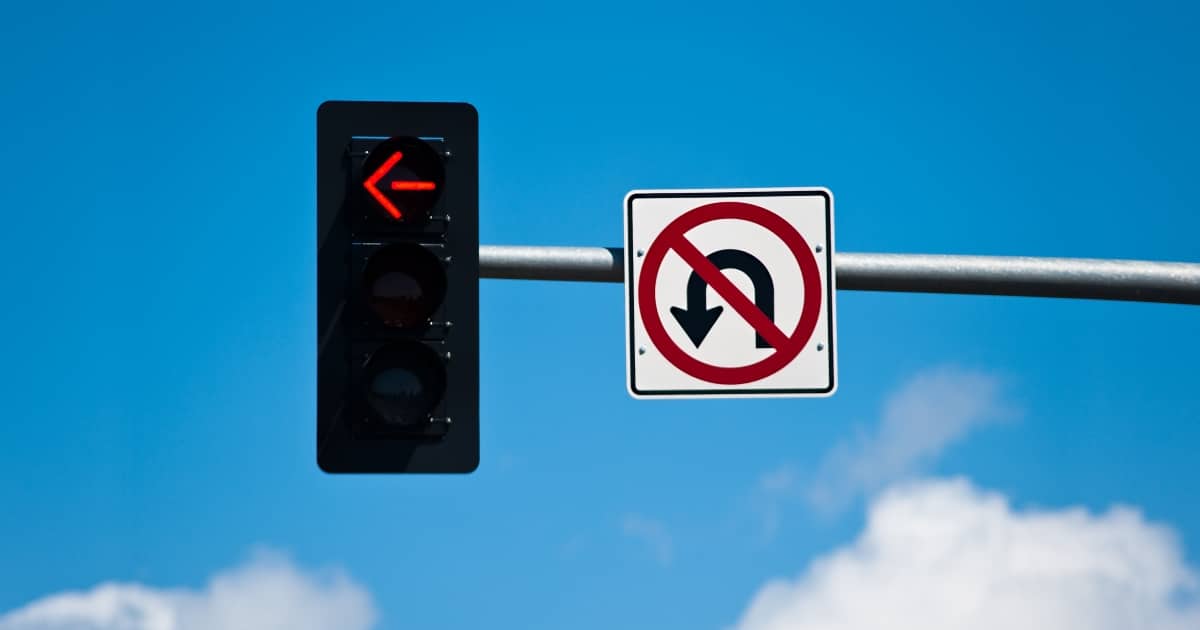[vc_row][vc_column][vc_column_text]It's your friend's birthday, and he has invited your family out to dinner in an area of the city that you're not very familiar with. It's Friday night, traffic is heavy, and you have no idea where this fancy new restaurant is. You're focused on driving, so it takes a moment to realize that your significant other in the passenger seat has pointed out "we just passed it." You've realized it is too late to make the turn, so you go straight through the next intersection. For some reason you turn down the volume of the radio in the preparation to turn around, unsure exactly of where or how to do it.
U-turns are not illegal in California, but there are guidelines to when and where a vehicle can make one. The DMV provides some specific guidelines as to when a U-turn is allowed:
- Across double yellow lines
- In residential areas with no vehicles approaching you within 200 feet
- In residential areas when protected from oncoming traffic by a sign, light, or signal
- At an intersection with a green light or arrow, unless a No U-turn sign is posted
- At an opening in the center divider of a divided highway
- Wherever a No U-turn sign is posted
- When starting from any lane but the left-most lane moving in the direction of travel
- When you cannot see 200 feet in every direction due to visual obstructions, including bad weather
- When you might collide with other vehicles
- When you might collide with pedestrians
- At railroad crossings
- At or in front of a fire station
- In a business district, except at intersections or turn lanes
- Anywhere but an opening in the center divider of a divided highway











